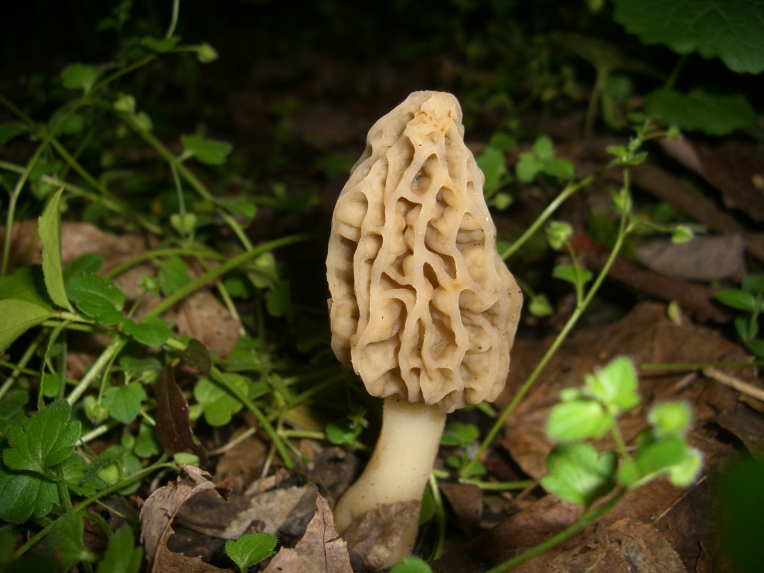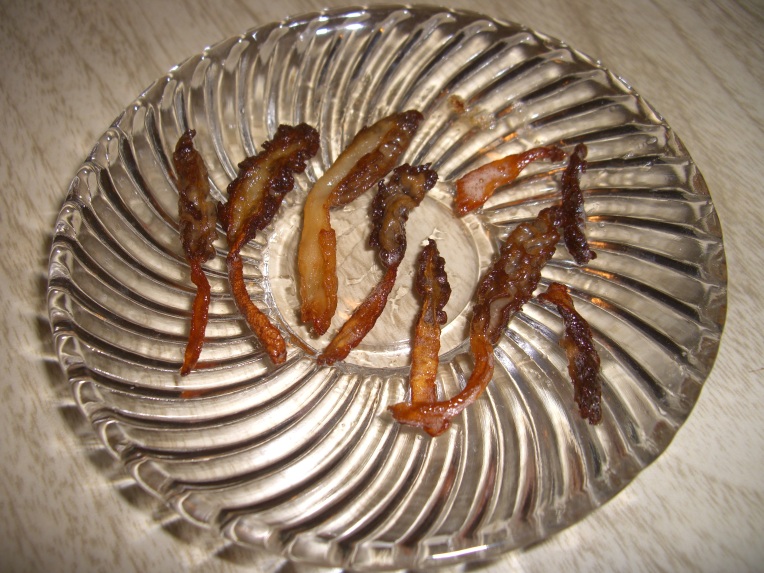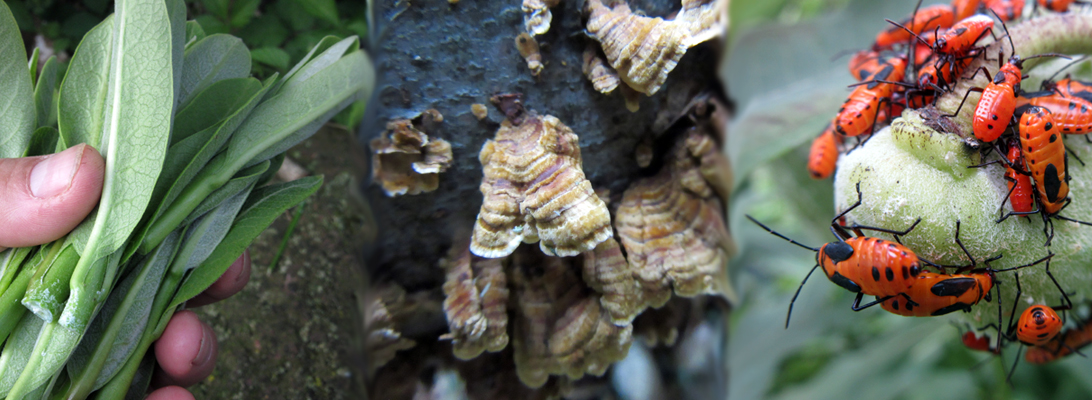Anyone who has looked at my art photography surely has to have noticed that I am fascinated with mushrooms. So it was pretty difficult for me when I decided that the beginners mushroom hunting book that I have wasn’t quite up to my standards of safety, despite marketing itself as super conservative and being criticized in amazon.com reviews as overly cautious. I may be overly cautious, but I would rather err on the side of safety.
So I decided that I would put mushroom hunting on the list of things that I wanted to learn at some future date. That was until I stumbled upon a patch of what looked a lot like morels, while clearing garlic mustard near the creek in the woods behind our house.

I remembered that there was a chapter about morels in Teresa Marrone’s Abundantly Wild. While I sometimes find Abundantly Wild to be more useful on the cooking end of foraging than the identifying end, I read the Morel chapter, and was very impressed with the photos and identification instructions. After checking to make sure that several online sources also agreed with her same basic identification rules and also said that morels were one of the easiest mushrooms to identify, I was confident enough to go pick one and see if it was a morel.
Today around lunch time, I headed down to the woods, cut one right at the base of the stem and brought it back home to check it out. I sliced it open and it easily met all the criteria. I put it in the fridge until my wife came home from work. I figured she would want to pick one herself, so I showed her the biggest one at the edge of the patch. She immediately spotted another one growing closer to us that I had missed during my previous visits. She picked it and we brought it back home. It also matched all the criteria.

I cleaned and cut both morels into thin slices and sauteed them in butter. We let them cool for a couple minutes, and then sampled them.

They were amazing! I’m not really a much of a foodie (I eat wild food more for the ethics, economics, and nutrition than the flavor), but I know good food when I taste it. Of course cooking almost anything in butter is going to give it an unfair advantage, but the flavor of the morels came through perfectly well. I honestly didn’t want to eat anything else for a while, because I didn’t want to lose the taste of the morels
So far we have found over twenty five growing in two patches, but we will only pick a small proportion of them. I know next year I’m going to be looking for a larger area to hunt morels.
Thanks for your interest, please leave some feed back if you have a minute.
Nate
* any pictures or descriptions of plants (or fungi) or information about them is provided for your information and inspiration. I highly recommend foraging, but buy yourself a reliable guide like either of Samuel Thayer’s books from Forager’s Harvest Press.
** I rely heavily on Nature’s Garden and The Forager’s Harvest by Samuel Thayer, and to a lesser extent Identifying and Harvesting Edible and Medicinal Plants by Steve Brill, as well as Abundantly Wild by Theresa Marrone. All of these books are quite good, however I find Thayer’s work to be the most reliable and detailed.













